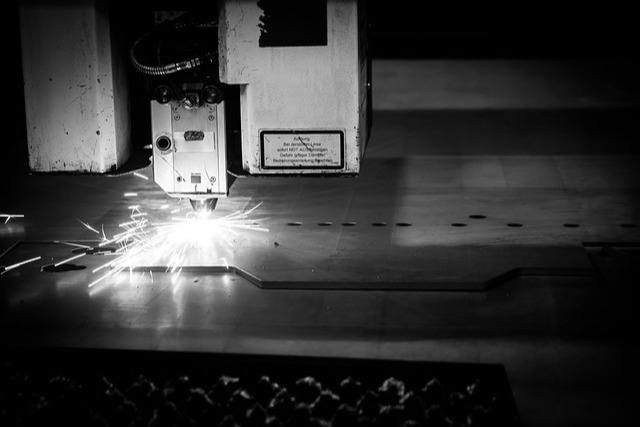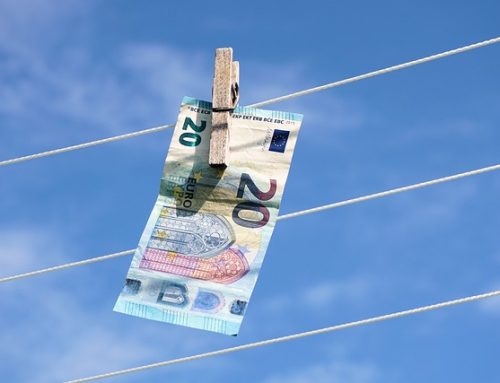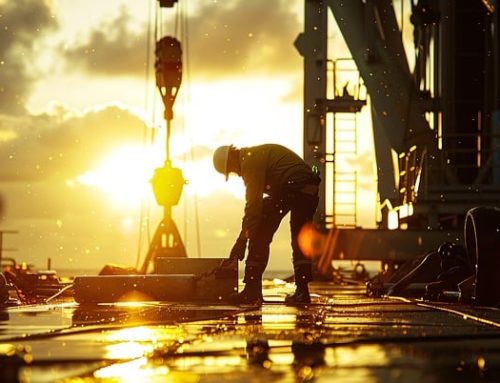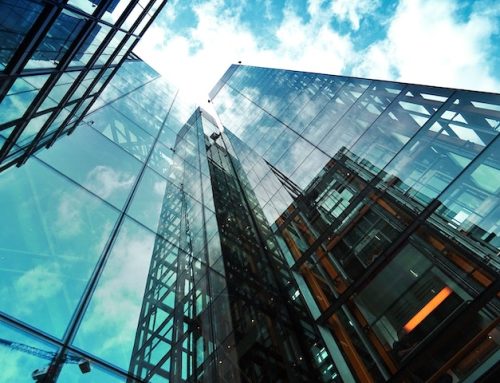February 20, 2023
A- OVERVIEW
1- VAT will not be calculated for the machinery, equipment, software and royalties purchased by those with investment incentive certificates in Türkiye.
Pursuant to the article (13/d) of the VAT Law No. 3065 in Türkiye, sales of machinery and equipment, sales and rentals of software and intangible rights within the scope of this document to taxpayers holding investment incentive certificates obtained from authorized institutions in Türkiye are exempt from VAT.
2- The machine and device must be depreciated and used in production
According to the General Communiqué on Accounting System Application No. 1, machinery and devices are defined as all kinds of machinery and devices used in production and their attachments and transport equipment used for this purpose.
In terms of the implementation of the aforementioned VAT exemption, machinery and equipment refer to fixed assets that are economic assets subject to depreciation and used in the production of goods and services.
3- Machinery and equipment must be listed on the incentive certificate in order to be eligible for the VAT exemption.
In order for a good to benefit from the exemption, it must first be included in the list attached to the investment incentive certificate and must be in the nature of machinery-equipment, and the activities in which this machinery-equipment is used must consist of transactions that are fully or partially entitled to discount.
4- Those who are not VAT payer cannot benefit from this exemption
Even if it is included in the incentive certificate, no exemption is applied for deliveries to those who do not have VAT liability and to those who will use machinery-equipment exclusively in transactions for which the right to discount is not granted.
5- Those who use machinery-equipment in transactions that do not have the right to VAT deduction cannot benefit from the exemption.
VAT is applied in the import of these goods by those who do not have VAT liability or who will use the machinery-equipment exclusively for transactions that do not have the right to discount, even if there is information to the contrary in the incentive certificate. It can be proved by the taxpayer that the machinery and equipment are used in transactions with the right to deduction, the nature of the current activity and the transactions in which the purchased machinery-equipment will be used are transactions that are entitled to deduction for VAT.
6- Fixtures such as tables, chairs, armchairs, etc. other than those used directly in production cannot benefit from VAT exemption
The fixtures such as tables, chairs, armchairs, cupboards, furnishings, other than consumables and spare parts, and those used directly and compulsorily in service production, are not included in the scope of exception, as they are not machinery and equipment.
7- Vehicles other than automobiles, panels, off-road vehicles, minibuses, buses, pickup trucks and trailers with green engines in compliance with Euro norms cannot benefit from the VAT exemption in this context.
Vehicles are also not included in the scope of machinery and equipment. Therefore, automobiles, panels, land vehicles, minibuses, buses (except for minibuses and buses that will be acquired by Municipalities and Special Provincial Administrations and their subsidiaries and companies whose shares are fully owned by them for use in urban passenger transportation), pickup trucks, trucks, trailers and tow trucks Vehicles such as (except tow trucks with green engines in accordance with Euro norms) cannot benefit from the exception.
8- Rock dump trucks, forklifts, construction machinery, cranes, agricultural machinery and some other vehicles with a laden weight exceeding 45 tons can benefit from VAT exemption
Delivery and importation of offroadtruck type trucks with a laden weight exceeding 45 tons and rock-type dump trucks that cannot go to the highway, dump trucks used in mining, mixer trucks (including those mounted on concrete pumps, bulk trailers, etc.), refrigerated trucks, semi or refrigerated trailers, forklifts, construction equipment, cranes, agricultural machinery and the like are within the scope of the exception.
9- Ambulances related to hospital investments included in the investment incentive certificate can benefit from VAT exemption.
Since the ambulances included in the incentive certificates for hospital investments are machinery and equipment in terms of hospital investments, exceptions are also applied for their delivery.
10- Apron buses used at airports are considered within the scope of VAT exemption
Apron bus deliveries that are only used at airports to transport passengers from the terminal to the plane and from the plane to the terminal and that are not trafficked are also considered within the scope of this exception, provided that they meet the above-mentioned conditions and do not carry out transportation outside the apron.
11- Machinery and equipment that comes in parts to be installed and assembled at the workplace and related assembly services are covered by VAT exemption.
Machinery-equipment that is installed and assembled at the investment site is within the scope of the exception, since it is technically not possible to deliver it as a whole to the taxpayer who has the incentive certificate and is included in the annexed lists. In this application, the installation and assembly works at the investment site by the taxpayer who delivers himself are not considered as services and are not exempted unless they are priced separately from the delivery, and the exception is applied to the total price including installation and assembly.
However, services such as modification, maintenance and repair provided separately from the delivery of investment goods with incentive certificates and installation, assembly and similar services received from other taxpayers (including those received from subcontractors by the delivering taxpayer and separately charged to the taxpayer holding the investment incentive certificate) are not considered within the scope of exemption.
12- The machinery and equipment provided within the scope of the investment incentive certificate can be transferred to another enterprise meeting the same conditions with the permission of the Ministry of Commerce.
It is possible to transfer the machinery and equipment provided within the scope of the investment incentive certificate to another taxpayer holding the investment incentive certificate with the permission and approval of the TR Ministry of Commerce, provided that the same machinery and equipment is included in the list attached to the investment incentive certificate owned by this taxpayer. No approval or permission is required for transfers and sales that are not subject to the approval and permission of the Ministry of Economy within the framework of investment incentive legislation.
13- The investment incentive certificate can benefit from VAT exemption for machinery and equipment purchased during the approval of the additional period transactions.
If a time extension request is made to the TR Ministry of Commerce due to the expiration of the investment incentive certificate and the request is met positively, the machinery and equipment purchased based on the investment incentive certificate for which the time extension is made between the expiry date and the date when the additional investment period is granted (provided that time is given to cover the interim period) are also within the scope of the exemption.
14- It is not possible to benefit from VAT exemption for machinery and equipment purchased before the investment incentive certificate is issued.
Before the investment incentive certificate is issued, it is not possible to benefit from the exemption application in terms of purchased machinery and equipment. Before the investment incentive certificate is issued, VAT on the machinery and equipment delivered under the exemption is requested from the seller.
15- The partial purchase of machinery and equipment within the scope of the incentive certificate does not prevent the application of the exception.
In the deliveries of machinery and equipment that make up the set, unit, system, set and the like included in the list annexed to the incentive certificate, the procedure is carried out within the scope of this exception. Partial deliveries of various machinery and equipment constituting sets, units, systems, sets and the like are also within the scope of the exception.
Buyers who want to purchase goods within the scope of the exemption apply to the tax office to which they are affiliated, obtain an exemption document (Annex: 9A) indicating that they have VAT liability and that they will use the machinery-equipment discount right, and submit a copy of this document to the customs administrations or domestic sellers.
B- IMPLEMENTATION OF VAT EXEXMPTION
1- In order to apply the VAT exemption, a VAT liability letter and exemption certificate must be obtained from the tax office, besides the incentive certificate
Buyers who want to purchase goods within the scope of the exemption apply to the tax office to which they are affiliated, obtain an exemption document (VAT GUT ANNEX 9A) indicating that they have VAT liability and that they will use the machinery-equipment discount right, and submit a copy of this document to the customs administrations or domestic sellers.
2- Information to be included in the petition to be submitted to the tax office
In order to benefit from this exemption, the followings are taken into consideration when issuing the said document to the investors who apply with a petition to the tax offices:
a) It is determined whether the investor has VAT liability in the tax office.
b) Considering the investor’s field of activity and the nature of the goods or services to be produced at the end of the investment, it is determined whether the machinery and equipment specified in the lists enclosed to the investment incentive certificate are related to the transactions for which the right to discount is granted.
c) While evaluating the situation of taxpayers (State universities and hospitals, municipalities, etc.) who carry out transactions with and without the right of discount, it must be proven that they will use the machinery and equipment included in the incentive certificates in the transactions that are entitled to discount.
3- VAT Exemption certificate is given by the tax office to the buyer who is a VAT payer, enterprises that are not VAT payers are not given certificates
The exemption certificate is given to the VAT payer. State universities, hospitals, municipalities and the like, which request an exemption certificate by the tax office, are given VAT liability at the time of application, and if there is no tax liability, an exemption certificate is issued to the economic enterprise, if any. In this way, machinery and equipment purchased within the scope of investment incentive certificate must be recorded in the balance sheet or asset of state universities and hospitals, municipalities and similar or economic enterprises, and this should be reported to the tax office within the VAT declaration submission period for the period of purchase. Otherwise, the tax must be sought from the buyer, as the “condition for use in transactions for which the right of discount is granted” will not be fulfilled. Exceptional transaction declaration and return request of the seller are fulfilled in accordance with the general provisions.
Economic assets included in the definition of machinery and equipment in the lists attached to investment incentive certificates are determined by the administrations issuing the certificate within the framework of the explanations above and those who will benefit from the exemption are clearly expressed.
4- The buyer who wants to benefit from the exemption must present the original of the incentive certificate and the attached list to the seller or the customs office.
Investors who want to benefit from the exemption request the exemption by submitting the original of the incentive certificate and the attached list to the seller or the customs office.
5- The seller applying the VAT exemption makes a note regarding the goods delivered to the attached list and puts signature and stamp.
When it is determined that the fixed asset is among the goods covered by the exemption in the investment incentive certificate, the transaction is carried out without applying VAT.
Moreover, by adding the following expression indicating the quantity of goods sold or imported, to an appropriate place in the list by the sellers or the relevant customs office, the annotation “… machine(s) and equipment in the …. row of the list have been sold/imported with the invoice/customs declaration dated ….. and numbered …” is approved with signature and seal (seal at customs administration).
If there is no place to be annotated in the list, an annotation is given on the allong by adding an annotation to the list by the sellers or customs administration.
A photocopy of the list annotated in this way and the investment incentive certificate are given to the customs administrations or sellers after being approved by the certificate holders by applying signature and stamp.
6- Sellers should be careful not to exceed the listed amount by referring to the previous notes in the original list submitted to them.
Investors cannot purchase goods within the scope of the exception more than the amount specified for each machinery and equipment in the lists attached to the investment incentive certificate. Sellers should be careful not to exceed this amount by looking at the annotations in the submitted lists.
Customs administrations and domestic sellers cannot operate within the scope of the exception until the above-mentioned conditions are met and this document is submitted. This document submitted to them by the Sellers is kept in accordance with the retention and submission provisions of the Law No. 213.
7- VAT is not calculated in the return of goods purchased without VAT within the scope of the investment incentive certificate.
In the return of machinery and equipment, which are exempted from tax within the scope of investment incentive certificate, to the seller, no tax is calculated depending on the original transaction.
8- VAT exemption is also applied to the financial leasing company in Machinery-Equipment Purchases through Financial Leasing.
Pursuant to the Financial Leasing, Factoring and Financing Companies Law No. 6361, the Decree on State Aids in Investments annexed to the Council of Ministers Decision No. 2012/3305 and the Communiqué on the Implementation of the Decision No. 2012/1 on State Aids in Investments regarding the implementation of this Decision, since a separate incentive certificate is not given on behalf of the financial leasing company for investments to be made through financial leasing companies, the document given to investors who apply to the tax offices with a petition and for which an incentive certificate is issued must include the following.
“Also, for the machinery and equipment that financial leasing companies will receive or import to be leased to companies holding incentive certificates regarding investments to be made through financial leasing companies, with this certificate issued on behalf of the company holding the incentive certificate, an exception is applied within the scope of article (13/d) of the VAT Law No. 3065.”
Based on this document, the financial leasing company, taking into account the investor’s incentive certificate, may procure the machinery and equipment included in the list attached to this investment incentive certificate and to be leased to the investor, within the scope of the exception in Article (13/d) of the Law. Leaving the machinery and equipment to be procured by the financial leasing company to the use of the lessee in accordance with the relevant legislation is subject to VAT according to general principles, since it does not constitute “delivery”.
On the other hand, at the end of the period specified in the contract between the financial leasing company and the investor (lessee), if the machinery and equipment do not become the property of the investor (lessee) or the investment is not realized as stipulated in the incentive certificate, the tax amounts not collected during the delivery to the financial leasing company are collected from the investor (lessee) along with the default interest, by applying a tax loss penalty, within the framework of Article (13/d) of the Law No. 3065.
9- The seller who delivers goods without VAT within the scope of the incentive certificate notifies the tax office in electronic environment
The sales within this scope within each taxation period by the sellers who deliver goods without calculating VAT within the scope of the incentive certificate are submitted to the tax office electronically within the declaration submission period.
The amount of the investment goods included in the scope of machinery and equipment, among the investment goods within the scope of the incentive certificate they give on a monthly basis, is notified to the Revenue Administration on a taxpayer basis by the Administration that issued the incentive certificate.
10- The information of those who lost their incentive certificate and/or its annexed list is reported to the Revenue Administration.
In addition, the Administration that issued the incentive certificate, those who lost the incentive certificate or annexed lists; It notifies the Revenue Administration by stating its name, surname, title, address, tax office, tax identification number and the date and number of the incentive certificate.
11- If the investment is not duly realized, penal action is applied retrospectively.
According to the article (13/d) of the Law No. 3065, if the investment is not realized as stipulated in the incentive certificate, the tax not collected on time is collected from the buyer together with the default interest by applying a tax loss penalty. VAT refund requests of the sellers are finalized in accordance with the current legislation. The statute of limitations for taxes and tax penalties not collected on time starts from the beginning of the calendar year following the date on which the tax is levied or the situation requiring the levying of the penalty occurs.
Whether the investment is realized as envisaged in the incentive certificate is determined by the Ministry of Commerce and notified to the tax office of the certificate owner to take necessary actions.
12- The seller is responsible for sales made without VAT, although it is not included in the list of incentive certificate and its annex.
Although it is not within the scope of the exemption in Article 13/d of Law No. 3065, it is natural that taxes and penalties will be sought from the seller in sales made with the justification of the said article and applying VAT exemption.
13- The exception will be reported under the 308 code in the VAT Declaration.
Transactions within the scope of the exemption are declared through the “Delivery of investment goods with incentives” line with code number 308 in the “Transactions Covered by Full Exception” tab of the “Exemptions-Other Transactions Entitlement to Return” tab in the VAT declaration.
14- The Seller shall use the VAT column charged for the return of the VAT charged for purchases.
In the “Delivery and Service Amount” column of this line, the VAT excluded amount of the goods subject to the exception is written, and in the “VAT Incurred” column, the total VAT amount shown in the documents related to the purchases and expenses related to these goods is written. Taxpayers who do not want to request a refund should write “0” in the ” VAT Incurred ” column.
Those who operate within the scope of the exception must certify the exception by making the notification mentioned in the VAT General Implementation Communiqué (II/B-5.4.).
15- Sellers can request a refund for the VAT they paid for their sales within the scope of VAT exemption.
The following documents are required for return requests arising from the deliveries of machinery and equipment within the scope of investment incentive certificate:
– Standard return request petition
– VAT list to be deducted for the period in which the exception was declared – VAT list charged for the transaction giving rise to the right to return
– VAT calculation table for which refund is requested
– List of sales invoices
– Exemption notification form
-A certified copy of the exemption document showing that the buyer has the right to benefit from the VAT exemption.
– Certified copy of the global list attached with the investment incentive certificate
16- VAT refund can be deducted from tax liabilities or future taxes
Taxpayers’ refund requests arising from this transaction are fulfilled without seeking tax inspection report, Certified Public Accountant report and collateral, regardless of the amount, provided that the above documents are submitted.
17- Cash refund requests up to 10 thousand TL are made without asking reports and guarantees.
Cash refund requests of the taxpayers arising from this transaction and not exceeding 10.000 TL are fulfilled without seeking tax inspection report, Certified Public Accountant report and guarantee. In case the refund request exceeds 10.000 TL, the refund of the excess amount is fulfilled according to the tax inspection report or the Sworn-in Certified Public Accountant report. If the guarantee is given, the taxpayer’s return request is fulfilled and the guarantee is resolved according to the result of the tax inspection report or the CPA report.
Ali KARAKUŞ
CPA, Independent Auditor
Karen Audit
İstanbul,
Feb 20, 2023
Source: VAT General Implementation Communiqué
Legal Notice: The information in this article is intended for information purposes only. It is not intended for professional information purposes specific to a person or an institution. Every institution has different requirements because of its own circumstances even though they bear a resemblance to each other. Consequently, it is your interest to consult on an expert before taking a decision based on information stated in this article and putting into practice. Neither Karen Audit nor related person or institutions are not responsible for any damages or losses that might occur in consequence of the use of the information in this article by private or formal, real or legal person and institutions.






